Hyundai Santa Fe vs Jeep Wrangler – Which car suits you better?
Both models have their strengths – but which one suits you more?
Compare performance, efficiency, price and space directly: Hyundai Santa Fe or Jeep Wrangler?
Costs and Efficiency:
Price and efficiency are often the first things buyers look at. Here it becomes clear which model has the long-term edge – whether at the pump, the plug, or in purchase price.
Hyundai Santa Fe has a distinct advantage in terms of price – it starts at 51200 £, while the Jeep Wrangler costs 69900 £. That’s a price difference of around 18643 £.
Fuel consumption also shows a difference: Hyundai Santa Fe manages with 1.70 L and is therefore convincingly more efficient than the Jeep Wrangler with 3.30 L. The difference is about 1.60 L per 100 km.
As for range, the Hyundai Santa Fe performs noticeable better – achieving up to 54 km, about 12 km more than the Jeep Wrangler.
Engine and Performance:
Power, torque and acceleration say a lot about how a car feels on the road. This is where you see which model delivers more driving dynamics.
When it comes to engine power, the Jeep Wrangler has a distinct edge – offering 380 HP compared to 253 HP. That’s roughly 127 HP more horsepower.
In acceleration from 0 to 100 km/h, the Jeep Wrangler is clearly perceptible quicker – completing the sprint in 6.50 s, while the Hyundai Santa Fe takes 9 s. That’s about 2.50 s faster.
In terms of top speed, the Hyundai Santa Fe performs minimal better – reaching 196 km/h, while the Jeep Wrangler tops out at 177 km/h. The difference is around 19 km/h.
There’s also a difference in torque: Jeep Wrangler pulls significantly stronger with 637 Nm compared to 380 Nm. That’s about 257 Nm difference.
Space and Everyday Use:
Whether family car or daily driver – which one offers more room, flexibility and comfort?
Seats: Hyundai Santa Fe offers evident more seating capacity – 7 vs 5.
In curb weight, Hyundai Santa Fe is to a small extent lighter – 1920 kg compared to 2276 kg. The difference is around 356 kg.
In terms of boot space, the Hyundai Santa Fe offers noticeable more room – 711 L compared to 533 L. That’s a difference of about 178 L.
In maximum load capacity, the Jeep Wrangler performs minimal better – up to 2050 L, which is about 18 L more than the Hyundai Santa Fe.
When it comes to payload, Hyundai Santa Fe to a small extent takes the win – 665 kg compared to 536 kg. That’s a difference of about 129 kg.
Who comes out on top?
Overall, the Hyundai Santa Fe shows itself to be wins the duel decisively and secures the title of DriveDuel Champion.
It convinces with the more balanced overall package and proves to be the more versatile choice for everyday use.
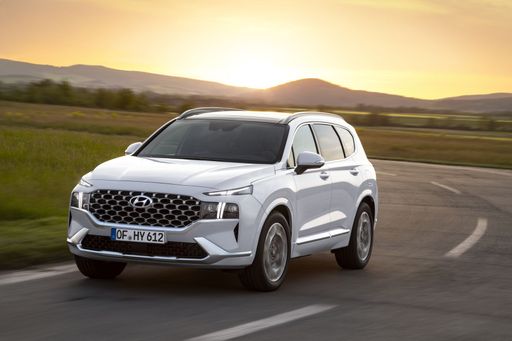
Hyundai Santa Fe
Hyundai Santa Fe
The Hyundai Santa Fe offers a refined blend of style and functionality, making it a strong contender in the SUV market. Its modern interior, combined with advanced technology and comfort features, creates an inviting and practical driving environment. With its sleek design and robust performance, the Santa Fe is well-suited for both urban commutes and family adventures.
details @ hyundai.news
@ hyundai.news
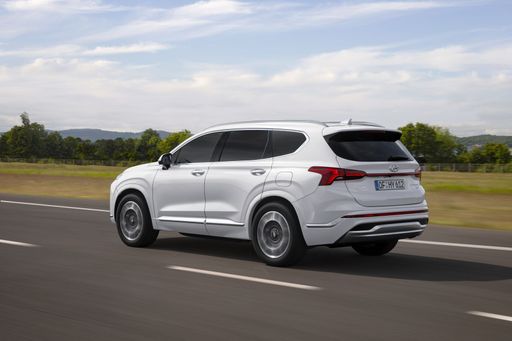 @ hyundai.news
@ hyundai.news
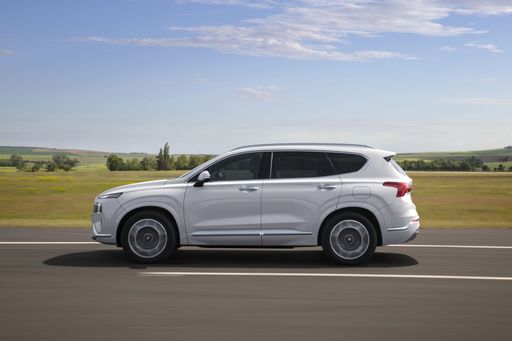 @ hyundai.news
@ hyundai.news
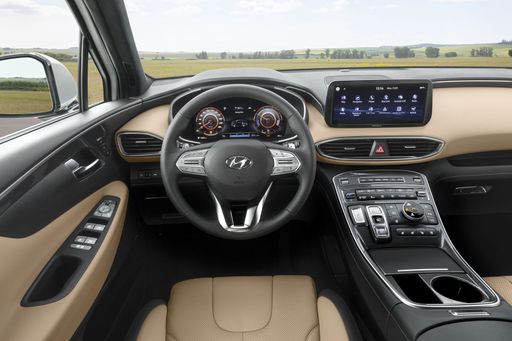 @ hyundai.news
@ hyundai.news
 @ hyundai.news
@ hyundai.news
Jeep Wrangler
The Jeep Wrangler is a symbol of rugged adventure and off-road capability, renowned for its distinctive boxy design and iconic seven-slot grille. Its interior blends practicality with modern technology, providing a comfortable environment whether you're navigating city streets or challenging terrains. With a loyal fan base, the Wrangler continues to capture the spirit of freedom and exploration, making it a favourite among outdoor enthusiasts.
details @ media.stellantis.com
@ media.stellantis.com
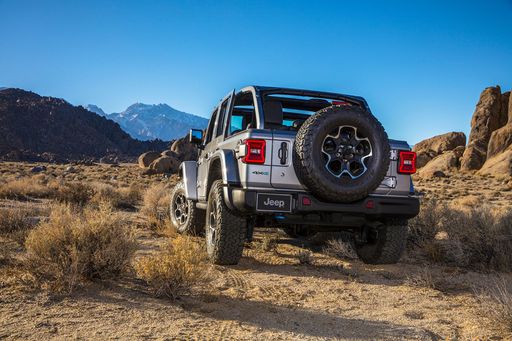 @ media.stellantis.com
@ media.stellantis.com
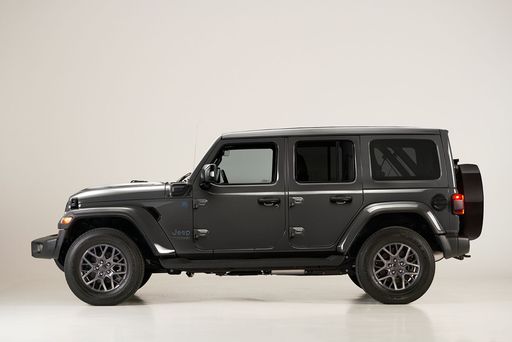 @ media.stellantis.com
@ media.stellantis.com
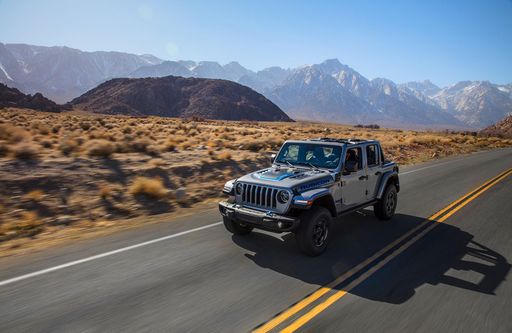 @ media.stellantis.com
@ media.stellantis.com
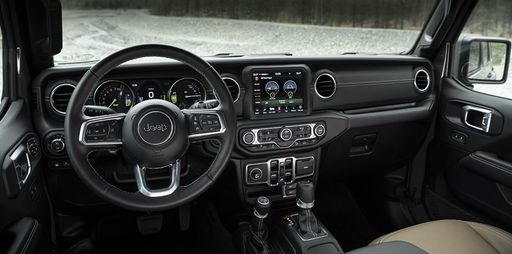 @ media.stellantis.com
@ media.stellantis.com

|

|
|
|
|
Costs and Consumption |
|
|---|---|
|
Price
51200 - 58400 £
|
Price
69900 - 71600 £
|
|
Consumption L/100km
1.7 - 7.1 L
|
Consumption L/100km
3.3 - 4 L
|
|
Consumption kWh/100km
-
|
Consumption kWh/100km
-
|
|
Electric Range
54 km
|
Electric Range
38 - 42 km
|
|
Battery Capacity
-
|
Battery Capacity
-
|
|
co2
38 - 160 g/km
|
co2
74 - 91 g/km
|
|
Fuel tank capacity
47 - 67 L
|
Fuel tank capacity
65 L
|
Dimensions and Body |
|
|---|---|
|
Body Type
SUV
|
Body Type
Off-Roader
|
|
Seats
5 - 7
|
Seats
5
|
|
Doors
5
|
Doors
5
|
|
Curb weight
1920 - 2165 kg
|
Curb weight
2276 - 2383 kg
|
|
Trunk capacity
621 - 711 L
|
Trunk capacity
533 L
|
|
Length
4830 mm
|
Length
4882 mm
|
|
Width
1900 mm
|
Width
1894 mm
|
|
Height
1720 mm
|
Height
1838 - 1848 mm
|
|
Max trunk capacity
1942 - 2032 L
|
Max trunk capacity
2050 L
|
|
Payload
560 - 665 kg
|
Payload
520 - 536 kg
|
Engine and Performance |
|
|---|---|
|
Engine Type
Plugin Hybrid, Full Hybrid
|
Engine Type
Plugin Hybrid
|
|
Transmission
Automatic
|
Transmission
Automatic
|
|
Transmission Detail
Automatic Gearbox
|
Transmission Detail
Automatic Gearbox
|
|
Drive Type
All-Wheel Drive, Front-Wheel Drive
|
Drive Type
All-Wheel Drive
|
|
Power HP
239 - 253 HP
|
Power HP
380 HP
|
|
Acceleration 0-100km/h
9 - 9.3 s
|
Acceleration 0-100km/h
6.50 s
|
|
Max Speed
180 - 196 km/h
|
Max Speed
156 - 177 km/h
|
|
Torque
367 - 380 Nm
|
Torque
637 Nm
|
|
Number of Cylinders
4
|
Number of Cylinders
4
|
|
Power kW
176 - 186 kW
|
Power kW
280 kW
|
|
Engine capacity
1598 cm3
|
Engine capacity
1995 cm3
|
General |
|
|---|---|
|
Model Year
2024 - 2025
|
Model Year
2024
|
|
CO2 Efficiency Class
B, E, F
|
CO2 Efficiency Class
B
|
|
Brand
Hyundai
|
Brand
Jeep
|
What drivetrain options does the Hyundai Santa Fe have?
Available configurations include All-Wheel Drive or Front-Wheel Drive.
The prices and data displayed are estimates based on German list prices and may vary by country. This information is not legally binding.
